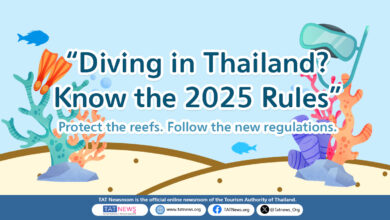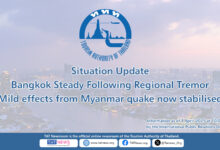Bangkok, 19 July 2019 – The Tourism Authority of Thailand (TAT) has obtained the latest guidelines from the Ministry of Public Health, prepared in collaboration with the public and private sector partners, on what to do in case of a jellyfish sting.
According to the Ministry of Public Health, although a jellyfish sting is not that common on Thai beaches but in the case one does happen, these are the recommended steps:
- Bring the injured person out of the sea to a safe place and immediately call an ambulance (Tel. 1669). Do not leave the person unattended.
- Calm the person down and make him/her remain still to prevent further spread of toxin and do not rub the wound.
- Pour vinegar continuously over the wound for at least 30 seconds (do not use fresh water), which will initially help in most cases.
- Observe the injured person for 45 minutes and watch for at least one of these signs/symptoms:
- severe pain on the wound, back, trunk or head.
- restlessness or confusion.
- sweating, chills, nausea or vomiting.
- palpitations, chest pain or chest tightness.
- breathing difficulty, rapid breathing or panting.
- pale face or bluish or purplish discolouration of the hands or feet.
If the injured person is unconscious, perform CPR before pouring vinegar continuously over the wound for at least 30 seconds.
To help prevent against jellyfish stings when swimming, wear a lycra suit or a long-sleeved shirt and pants that cover all skin surfaces.
Always keep a look out for jellyfish warning signs that may be posted at a beach.
It’s a good idea to carry a bottle of vinegar with you.







